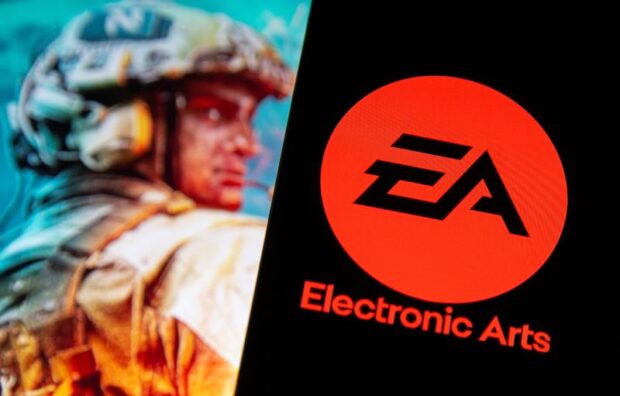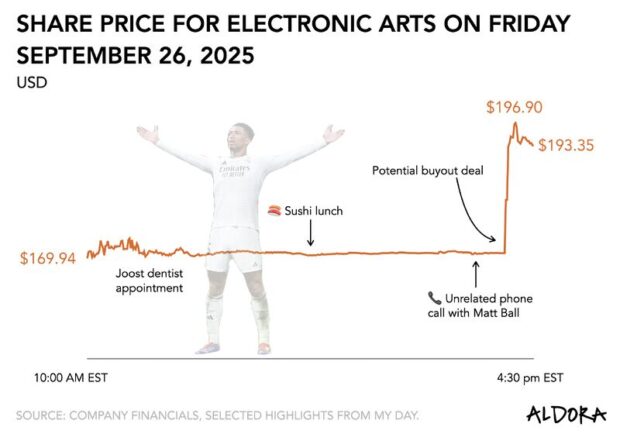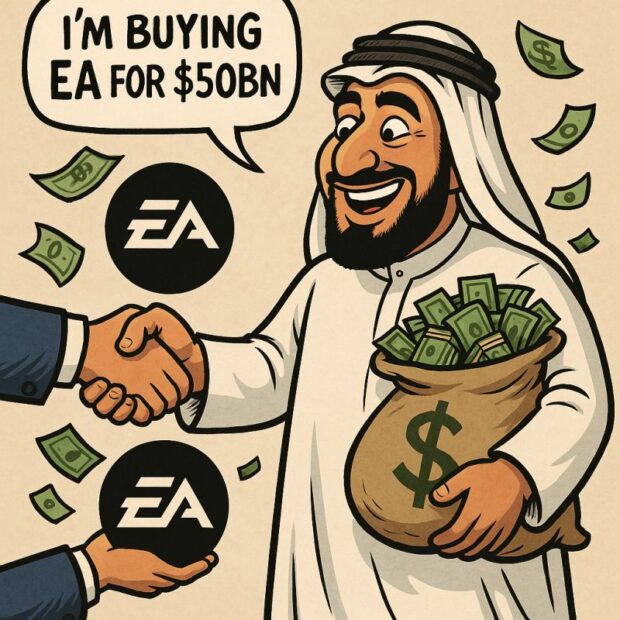
Gaming’s counter-cycle
Journal 10 Joost van Dreunen April 24
Interactive entertainment thrives despite economy, defying expectations.

BIG READ: Gaming’s counter-cycle
- TL;DR: Nintendo’s Switch 2 pre-order frenzy is further evidence that in times of economic strain, video games continue to defy gravity, revealing a powerful counter-cyclical pattern that reshapes how we understand consumer priorities.
This week, 2.2 million Japanese consumers registered for Nintendo’s Switch 2 lottery. It is a figure that’s less about an impressive pre-order statistic and more about the broader economics of console gaming.
The concentrated demand surge for a premium-priced console costing $449.99 during a period of heightened tariff pressures and economic uncertainty showcases counter-cyclical market dynamics that challenge conventional assumptions about discretionary spending behavior. The business of video games has a distinctive economic resilience with significant implications for investors, strategists, and policymakers alike.
History backs this up.
During the 2007-2009 financial recession, the gaming market remained largely stable, with global revenues maintaining equilibrium from $61.3 billion in 2007 to $62.7 billion in 2010. This plateau effect occurred despite severe contractions across virtually every other discretionary spending category—a pattern that suggests gaming occupies a privileged position in consumer spending hierarchies during periods of economic stress.
More revealing than top-line revenue stability was the continued growth in hardware adoption during this same period. Console sales for Wii, Xbox 360, PS3, and Nintendo DS all demonstrated positive unit growth trajectories. Certainly, the Wii was a massive success to the point that the device was hard to come by. Even the PlayStation 3, following its disastrous pricing schema at the time, managed to recover during this period. The counterintuitive hardware adoption pattern directly contradicted mainstream economic forecasting models that predicted significant contraction in durable goods purchases during recessionary periods.
Engagement metrics further reinforce this inverse correlation to economic indicators. Nielsen data from the same period showed weekly gameplay hours increasing from 15 to 18 hours as broader economic conditions deteriorated. Games like World of Warcraft were at their peak during this time. As employment uncertainty rose and discretionary income declined, consumers reallocated both time and financial resources toward interactive entertainment experiences that offered superior value-per-hour economics compared to alternative leisure activities.
That shift also showed up in household budgets during COVID, as entertainment’s share of spending climbed to 5.6% during the recession, compared to 4.9% in 2013. In 2023, it hovered around 4.7%, down from the pandemic peak of 5.3%, but still higher than pre-recession norms. It is this proportional increase amid overall spending contraction that underscores a foundational recalibration of consumer priorities during economic stress that consistently benefits interactive entertainment.

Sony is reading from the same playbook as Nintendo. The company recently raised the PS5’s retail price across Europe, Australia, and New Zealand, citing inflation and currency volatility, thereby adding another layer to the counter-cyclical thesis. At first glance, increasing prices in a downturn seems economically irrational. Yet the move mirrors Nintendo’s strategy: both firms are betting on brand resilience and product indispensability in lean times. In effect, Sony is testing the same elasticity Nintendo is exploiting with the upcoming Switch 2.
In its most recent earnings, Sony reported its strongest fourth-quarter PlayStation 5 sales in years, buoyed by the launch of its $700 Pro model. The gaming division pulled in $11.2 billion in revenue—a 16% year-over-year increase—while operating income surged 37% to a record $787 million. The gains were powered by higher-margin PlayStation Network services and improved profitability on hardware. Evidently, both companies feel confident enough to raise or maintain premium pricing amid inflation and tariffs speaks to more than just consumer loyalty, pointing to a broader recalibration of gaming’s role in household economics.
These counter-cyclical principles inform Nintendo’s current market positioning for the Switch 2. I’ve previously argued that the company’s pricing strategy incorporates a calculated buffer against the 22% import tariff regimes recently implemented—a strategic inflation that would typically suppress demand in conventional economic models but appears to have minimal impact on Nintendo’s core audience’s willingness-to-pay thresholds. Both of those things can be true: the Switch 2 commands a premium because it’s Nintendo—and because new tariffs require that strategic buffer.
Such pricing resilience stems from Nintendo’s longstanding emphasis on brand value preservation mechanics. The firm has maintained extraordinary price discipline across its core franchises—Zelda: Breath of the Wild has been discounted only 17% since its 2017 launch, compared to 45% for comparable third-party premium titles released in similar timeframes. Its consistent premium positioning has conditioned Nintendo’s consumer base to prioritize product quality and experiential value over price sensitivity, creating relatively inelastic demand even during broader economic contractions.
As I’ve argued before, the gaming industry oscillates between phases of content innovation (game development and IP creation) and distribution innovation (business models and access mechanisms). With macro indicators softening, the pendulum is swinging once more—this time away from content (2016–2023) and toward distribution. We’ve seen this pattern before: post-crash recoveries in 1983, 2008, and again in 2023.
Nintendo’s lottery system itself represents a sophisticated application of controlled scarcity management designed to maintain premium market positioning during this transition. By artificially constraining initial supply and implementing a lottery mechanism rather than a traditional first-come-first-served allocation, Nintendo simultaneously generates demand signaling data, preserves pricing power, and maintains perceived product exclusivity—critical factors for navigating the early stages of a distribution innovation cycle.
The strategic implications of these patterns suggest a market bifurcation that creates distinct positioning requirements for different categories of participants. Premium content sovereigns like Nintendo must balance pricing power against accessibility, maintaining quality perception while expanding addressable markets. Distribution platform innovators focused on subscription services and cloud gaming are positioned to capture market share through value propositions that resonate during spending constraints.
What remains under-examined in current market discourse is how the convergence of tariff-induced pricing pressures and the pendulum shift toward distribution innovation might accelerate fundamental restructuring of gaming’s economic architecture. Will economic headwinds strengthen Nintendo’s brand premium, or accelerate migration toward alternative distribution models? The extraordinary demand signals from Japan suggest the former, but historical pattern recognition indicates that both forces may simultaneously reshape market dynamics in the coming cycle.
Am I suggesting that the games industry is impervious to the volatility in the global market? No. But I am saying that video games are a go-to form of entertainment that has proven itself to be more resilient during times of financial recession.
As for winners and losers, we’re already seeing early indications that those firms that have successfully transitioned toward digital distribution for their revenue are better insulated from tariffs and market fluctuations. While digital gaming firms benefit from these dynamics, other segments—especially physical goods like board games—face headwinds. And smaller startups in the tabletop space are going to face significant challenges in the years ahead. On the high end, that makes life harder for firms like Asmodee, for instance, which recently divested from Embracer and relies for 21.4% of its total revenues on the United States. Publishers like EA and Take-Two, which each manage desirable IP can command a premium and grow margins because over 80 percent of their respective businesses rely on digital distribution.
As we navigate the complex intersection of technological evolution, regulatory intervention, and macroeconomic recalibration, Nintendo’s positioning offers valuable insights into sustainable business model adaptation during periods of economic transition—lessons that extend well beyond the gaming sector into broader digital economy strategic planning.
NEWS
Hasbro share price jumps 13% on earnings
The gaming division is holding the toy maker upright and then some, even as its more conventional business components face a tough market environment.
Up +46 percent from the same quarter a year earlier, Wizards of the Coast & Digital Gaming generated $462 million in 25Q1 revenues, compared to $398 million for Consumer Products (down -4%), and $27 million for Entertainment (down -5%). The biggest driver of revenue for Wizards was its Tabletop segment, which was up 37% overall, compared to Digital (+1%) and Digital Licensing (+8%).

It’s all part of the firm’s Playing to Win strategy, which centers on games, IP, and toys through franchising and partnerships, with an emphasis on digital expansion and aging up their audience to reach 1 billion fans by 2030.
The firm’s success evidences the broader potential to offset market threats and economic challenges for non-endemic firms by leveraging interactive entertainment. Like the success reported by the New York Times with Wordle, gaming is quickly becoming a key strategic differentiator among a growing range of firms.
With regards to the impact of (the threat of) tariffs, management stated:
“Our forecast assumes various scenarios for China tariffs ranging from 50% to the rate holding at 145% and 10% for the rest of world. This translates to an estimated $100 – $300 million gross impact across the enterprise in 2025, before any mitigation.”
Hasbro nevertheless raised its full-year outlook for the Wizards segment to mid-to-high teens revenue growth because of upcoming collaborations with Final Fantasy, Spider-Man, and Avatar: The Last Airbender.
Hasbro’s share price jumped from $52.81 to $60.86 on the earnings announcement.
AC Shadows’ success fails to lift Ubisoft
According to Circana, the new release was the best-selling premium game in the US. Despite a strong launch, trailing only AC Creed III and AC Valhalla in the US in terms of dollar sales, Ubisoft’s share price dropped from $13.09 to a low of $8.38 on April 10th. It echoes a similar disconnect on the other side of Europe, where investors insist on undervaluing CD Projekt.

Discord CEO steps down ahead of IPO
Naming Humam Sakhnini as its new Chief Executive Officer, Discord’s co-founder Jason Citron will now be on the firm’s board of directors. The move comes in the lead-up to a public offering of the firm.
The swap-out is not a bad idea. Startup CEOs are cut differently than their corporate counterparts. Sakhnini previously held leadership roles as President and later CEO at King Digital and Vice Chairman at Activision Blizzard. Sources tell me Sakhnini is well-liked and a “great hire.”
With 200 million monthly active users collectively spending 2 billion hours on gaming monthly, Discord has demonstrated remarkable community engagement metrics but faces the quintessential platform challenge: how to convert this engagement into sustainable revenue streams without compromising the authentic community connections that constitute its fundamental value proposition.
The announcement comes a few days after New Jersey Attorney General Matthew J. Platkin announced a lawsuit against the firm, alleging that it was misleading parents about the efficacy of its safety controls. Privacy concerns and child safety have become increasingly vexing issues in digital environments. Earlier this week, Roblox found itself having to rally when re-enactments of school shootings started to appear on its platform.
PLAY/PASS
Play. Ubisoft’s release of Chroma, an open-source tool to add color blindness filters to games. Seems like an application that would be widely useful.
Pass. “Return the dignity of work to young men who need to be at work instead of playing video games all day,” says the US House Speaker, Mike Johnson. It’s a spectacular comment coming from the third most powerful person in the US government, probably selling out many of the same young men who voted for Trump because they felt disempowered. I bet they can’t wait to relish in the dignity of putting tiny screws into iPhones and making sneakers.
NEXT UP
Roblox will report its first-quarter earnings next week. Analyst expectations are optimistic, but I’m mostly curious to see if there are any early results on the in-game rewarded video ads (together with Google) as it moves to monetize its audience with advertising.







